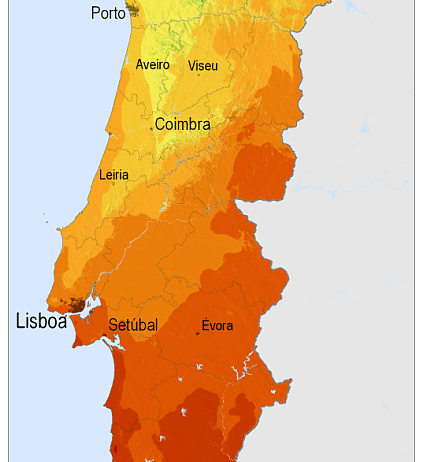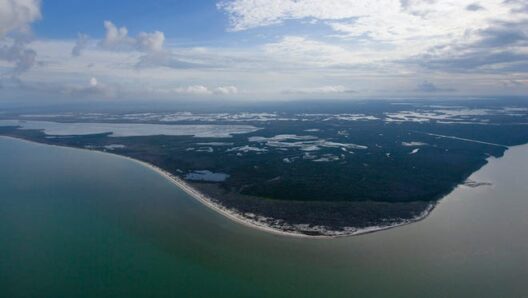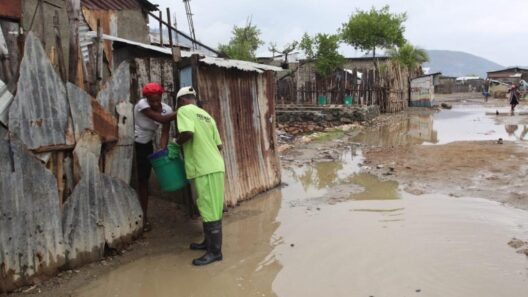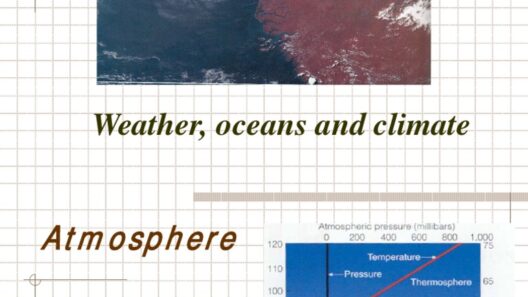What is it about Portugal’s climate that tempts travelers and lures nature enthusiasts? Is it the sun-soaked beaches, the invigorating Atlantic breezes, or the unique flora and fauna found nowhere else? The climate of Portugal is a captivating tapestry woven from its geographical location, Atlantic proximity, and Mediterranean influence. This environmental interplay not only crafts a distinct weather pattern but also raises intriguing questions about the implications of climate change in this picturesque country.
Located on the Iberian Peninsula, Portugal is bordered by the Atlantic Ocean on the west and south. This coastal position significantly influences its climate. The country embraces a mix of Mediterranean and temperate weather systems, which results in striking contrasts between the coastal regions and the inland areas. As we delve deeper into this subject, we must contemplate: how might rising sea temperatures and shifting weather patterns alter this delicate balance?
To begin with, Portugal generally enjoys a Mediterranean climate characterized by hot, dry summers and mild, damp winters. The southern regions, especially the Algarve, are renowned for scorching summers that can exceed 30°C (86°F), while winters remain relatively balmy. In contrast, the northern areas, like Minho and Trás-os-Montes, experience greater rainfall and cooler temperatures, primarily due to the orographic lift created by the surrounding mountains.
The litoral areas benefit from the Atlantic Ocean’s tempering effects. Ocean currents moderate temperature fluctuations, yielding mild winters that create an appealing year-round climate. Summer months are frequently radiant, yet coastal breezes provide respite from the heat, making it ideal for myriad outdoor activities, from surfing to hiking along the scenic cliffs.
However, the climate of Portugal is not merely defined by degree measurements or precipitation levels; its essence is encapsulated in the biodiversity and ecosystems that flourish within its borders. The climatic variations across the country give rise to a rich array of habitats, from verdant vineyards of the Douro Valley to the arid landscapes typical of the Alentejo region. The agricultural richness reflects not only the climatic conditions but also the cultural practices deeply intertwined with the land. As temperatures rise globally, how will these agricultural traditions adapt to ensure sustainability?
Despite its alluring qualities, Portugal’s climate faces tangible challenges. Droughts have become more frequent and severe, particularly in the southern regions. This phenomenon has led to a substantial decrease in water availability, imperiling the lush vineyards and crop yields that have defined the region for centuries. The increase in extreme weather events, such as forest fires, also poses significant threats. Forest ecosystems are under siege from rising temperatures and erratic rainfall patterns. This unsettling situation raises a critical question: will Portugal preserve its natural heritage, or will climate change dictate a different fate?
Portugal’s energy landscape is evolving in response to its climate challenges. The commitment to renewable energy sources, particularly wind and solar power, is a pivotal step toward reducing the carbon footprint. With the winds of the Atlantic presenting an abundant resource, Portugal has harnessed this potential. wind farms dot the landscape, buoyed by policies fostering sustainable growth. Can Portugal become a model for other nations wrestling with climate adaptation?
Another important aspect of Portugal’s climatic profile is its unique seasons. While summer dominates with sun-kissed days, autumn and spring arrive with their own charms. The transitional months serve as a bridge, showcasing a diversity of colors and temperatures. However, with climate variability becoming commonplace, these seasonal transitions are at risk of becoming increasingly erratic. The challenge lies in our collective effort to mitigate these trends. How can residents and visitors alike contribute to a more resilient ecological future for Portugal?
Tourism, intrinsically linked to Portugal’s climate, also proves vulnerable to changing weather patterns. The demand for sun-soaked holidays thrives during the summer months, but environmental changes can disrupt tourism flows. Coastal erosion, exacerbated by rising sea levels, threatens charming beach destinations. Engaging the local communities in sustainable tourism practices might offer some solutions. Will stakeholders rally to embrace stewardship for the coastal wonders that draw millions every year?
In conclusion, Portugal’s climate is a multifaceted phenomenon shaped by its unique geographical location and environmental characteristics. It is a realm where Mediterranean sunlight meets Atlantic winds, crafting idyllic landscapes brimming with life. Yet, as with many other regions across the globe, climate change presents formidable challenges that must be addressed. Solutions lie in partnerships between government, communities, and individuals, all striving to foster a sustainable future for this enchanting country. With creativity and commitment, perhaps Portugal can navigate the tumultuous waters of climate change, ensuring its climate remains a beacon of hope amidst global uncertainty.








